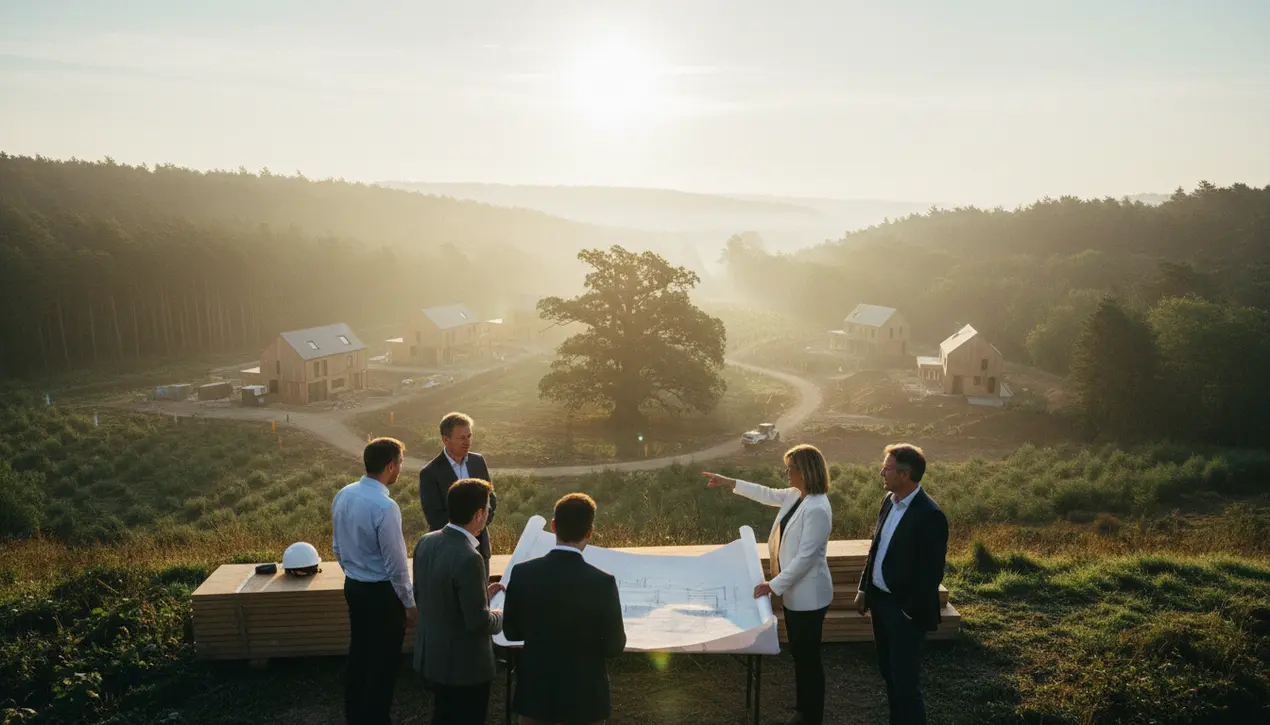
Otherreal estateConstruction and Development
How ambitious ‘forest city’ plan for England could become a reality
RA
Rachel Adams
10 hours ago7 min read3 comments
The ambitious vision for England's first 'forest city'—a proposed settlement for one million people embedded within the nation's largest new nature reserve in decades—represents a profound shift in how we conceptualize urban development amidst ecological crisis. This isn't merely a housing project; it's a bold experiment in biophilic design, where four-bedroom homes priced around £350,000 would be constructed primarily from sustainable timber, fundamentally intertwining the built environment with the natural world.The cross-party coalition championing this scheme, hoping to break ground before the end of the current parliament, is attempting to achieve what has eluded planners since the birth of Milton Keynes: creating a new town from scratch that actively enhances, rather than depletes, the natural capital of the region. The sheer scale of the proposed nature reserve, intended to envelop the city, evokes the kind of visionary thinking seen in grand ecological restoration projects, yet its success hinges on navigating a labyrinth of political will, complex funding models, and the formidable challenge of Britain's restrictive planning system.Proponents argue that such a development is not a luxury but a necessity, offering a tangible solution to the dual crises of housing shortage and biodiversity loss, creating a carbon-sequestering community that could serve as a living laboratory for sustainable living. However, sceptics rightly question the logistical feasibility, pointing to potential conflicts with existing green belt policies, the immense infrastructure requirements for transport, water, and energy, and the risk of creating an exclusive enclave rather than a genuinely affordable, inclusive community.The historical precedent of Britain's post-war new towns, from Stevenage to Telford, provides both inspiration and cautionary tales; while they successfully decanted populations from crowded cities, many later struggled with identity and economic vitality, lessons that must be heeded. This forest city concept must therefore be scrutinized not just for its architectural and environmental merits, but for its social and economic resilience—will it foster community, provide local employment, and integrate seamlessly with its broader region, or will it become a beautiful, yet isolated, eco-bubble? The involvement of a cross-party group is significant, suggesting a rare consensus on the need for radical action, but the true test will be translating this political alignment into concrete planning permission and securing the billions in public and private investment required. As climate targets become more urgent and the demand for housing intensifies, this proposal forces a critical conversation: can we reimagine our landscapes to accommodate human habitation in a way that actively heals the planet, or will we continue with the unsustainable sprawl that has characterized the past century? The spades in the ground, if they ever appear, will mark not just the start of a construction project, but a pivotal moment for British environmental and urban policy.
#featured
#forest city
#sustainable housing
#new town
#nature reserve
#urban planning
#England
Stay Informed. Act Smarter.
Get weekly highlights, major headlines, and expert insights — then put your knowledge to work in our live prediction markets.
Related News
Comments
Loading comments...
© 2025 Outpoll Service LTD. All rights reserved.